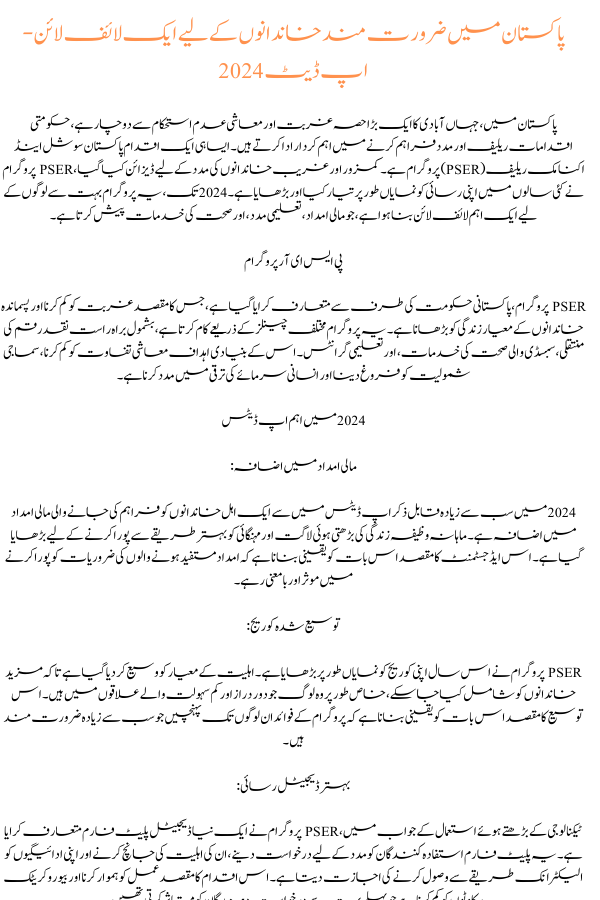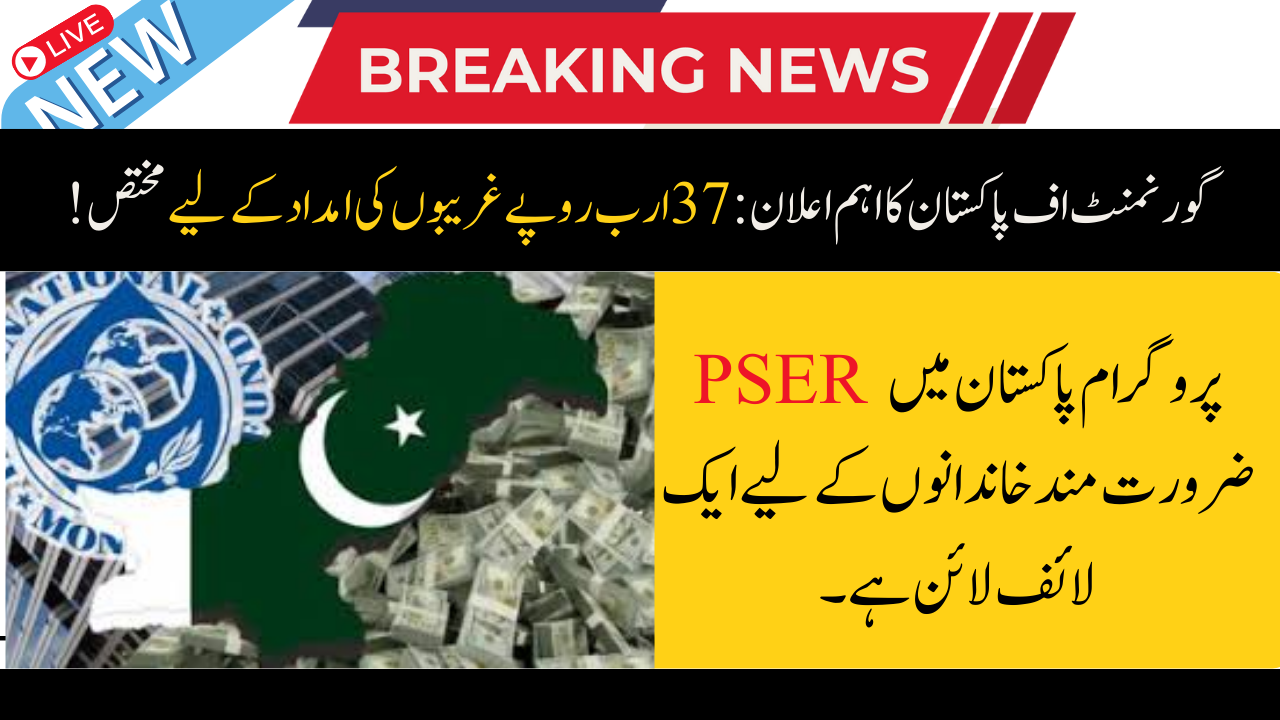A Lifeline for Needy Families in Pakistan – Update 2024
In Pakistan, where a significant portion of the population grapples with poverty and economic instability, government initiatives play a crucial role in providing relief and support. One such initiative is the Pakistan Social and Economic Relief (PSER) Program. Designed to support vulnerable and impoverished families, the PSER program has evolved and expanded its reach significantly over the years. As of 2024, the program continues to be a critical lifeline for many, offering financial assistance, educational support, and health services.
PSER Program
The PSER Program, introduced by the Pakistani government, aims to alleviate poverty and enhance the quality of life for underprivileged families. The program operates through various channels, including direct cash transfers, subsidized health services, and educational grants. Its primary goals are to reduce economic disparity, promote social inclusion, and support the development of human capital.
Key Updates in 2024
Increased Financial Assistance:
One of the most notable updates in 2024 Lifeline for Needy Families in Pakistanis the increase in the financial assistance provided to eligible families. The monthly stipend has been raised to better match the rising cost of living and inflation. This adjustment is aimed at ensuring that the aid remains effective and meaningful in addressing the needs of beneficiaries.
Expanded Coverage:
The PSER Program has significantly expanded its coverage this year. The eligibility criteria have been broadened to include more families, especially those in remote and underserved areas. This expansion aims to ensure that the benefits of the program reach those who are most in need.
Enhanced Digital Access:
In response to the increasing use of technology, the PSER Program has introduced a new digital platform. This platform allows beneficiaries to apply for assistance, check their eligibility, and receive their payments electronically. This move is intended to streamline the process and reduce the bureaucratic hurdles that previously affected many applicants.

Educational Support Initiatives:
Recognizing the importance of education in breaking the cycle of poverty, the PSER Program has introduced additional educational support. This includes scholarships for students from low-income families and financial aid for school supplies and uniforms. These initiatives are designed to increase school enrollment and retention rates among children from needy families.
Healthcare Services Expansion:
The healthcare component of the PSER ProgramLifeline for Needy Families in Pakistan has been enhanced to provide better medical services to beneficiaries. New partnerships with local clinics and hospitals have been established to offer subsidized medical care, including vaccinations, maternal health services, and treatment for chronic illnesses.
Impact on Beneficiaries
The updates to the PSER Program in 2024 have had a significant positive impact on the lives of many families. The increased financial assistance has helped families cover basic needs such as food, shelter, and utilities. The expanded coverage ensures that more families in need are receiving support. The digital platform has made accessing the benefits more convenient, and the educational and healthcare initiatives are helping to improve the overall well-being of beneficiaries.
FAQs
Who is eligible for the PSER Program?
Eligibility for the PSER Program is determined based on a family’s income level and socio-economic status. Generally, families with incomes below a certain threshold and those who are considered vulnerable or disadvantaged are eligible. Specific criteria can vary by region and may be updated periodically.
How can families apply for the PSER Program?
Families can apply for the PSER Program through the new digital platform introduced in 2024. They can visit the official PSER website or use the mobile app to submit their application. Assistance is also available through local government offices and community centers.
What documents are required to apply?
Applicants typically need to provide proof of income, identification documents, and proof of residence. Additional documentation may be required depending on the specific requirements of the program and the region in which the application is submitted.
How is the financial assistance distributed?
Financial assistance is distributed on a monthly basis through bank transfers or digital payments. Beneficiaries receive their payments directly into their bank accounts or mobile wallets, ensuring a secure and efficient transaction process.
What educational support is available through the PSER Program?
The PSER Program offers scholarships for students from low-income families, financial aid for school supplies and uniforms, and support for educational expenses. These initiatives aim to reduce the financial burden on families and encourage school attendance.
How has the healthcare component of the program been improved?
The healthcare component has been improved by establishing partnerships with local clinics and hospitals to provide subsidized medical care. This includes services such as vaccinations, maternal health care, and treatment for chronic conditions, ensuring that beneficiaries have access to essential health services.
Where can I find more information about the PSER Program?
More information about the PSER Program can be found on the official PSER website or by contacting local government offices. The digital platform also provides detailed information and support for applicants.
Conclusion
The PSER Program continues to be a vital support system for needy families in Pakistan. With the updates implemented in 2024, the program has strengthened its efforts to combat poverty, enhance access to education, and improve healthcare services. By adapting to changing needs and leveraging technology, the PSER Program remains a cornerstone of social welfare in Pakistan, making a significant difference in the lives of many Lifeline for Needy Families in Pakistanvulnerable individuals and families.

